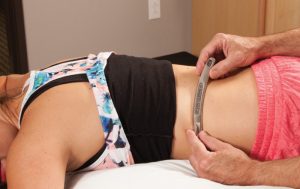Soft Tissue Therapy in Fanwood

Graston Technique
Graston Technique® (GT) is a unique, evidence-based form of instrument-assisted soft tissue mobilization in Fanwood that enables clinicians to effectively and efficiently address soft tissue lesions and fascial restrictions resulting in improved patient outcomes.
GT uses specially designed stainless steel instruments with unique treatment edges and angles to deliver an effective means of manual therapy. The use of GT instruments, when combined with appropriate therapeutic exercise, leads to the restoration of pain-free movement and function. The instruments also are used diagnostically to assess the kinetic chain, in an efficient manner using the principles of regional interdependence.
Is Graston Technique® an Evidenced-Based Form of Manual Therapy in Fanwood?
Empirical and anecdotal evidence exists for the following physiological effects of GT:
- Separates and breaks down collagen cross-links, and splays and stretches connective tissue and muscle fibers
- Facilitates reflex changes in the chronic muscle holding pattern (inhibition of abnormal tone/guarding leading to pain reduction via improved sensory input)
- Alters/inhibits spinal reflex activity (facilitated segment)
- Increases the rate and amount of blood flow to and from the area (angiogenesis vs. immediate local increases in blood flow)
- Increases cellular activity in the region, including fibroblasts and mast cells
- Increases histamine response secondary to mast cell activity
How are Graston Technique® instruments used?
 GT instruments are used first to enhance the clinician's ability to detect soft tissue lesions, scar tissue/fibrosis or restrictions in the affected areas as determined from a comprehensive examination of movement and function. Skilled clinicians use the stainless steel instruments to comb over and "catch" on fibrotic tissue, which immediately identifies the areas of restriction. Once the tissue has been identified, the instruments are then used to address and treat the abnormal tissue. When GT is combined with appropriate therapeutic exercises and activities, pain free function is often restored.
GT instruments are used first to enhance the clinician's ability to detect soft tissue lesions, scar tissue/fibrosis or restrictions in the affected areas as determined from a comprehensive examination of movement and function. Skilled clinicians use the stainless steel instruments to comb over and "catch" on fibrotic tissue, which immediately identifies the areas of restriction. Once the tissue has been identified, the instruments are then used to address and treat the abnormal tissue. When GT is combined with appropriate therapeutic exercises and activities, pain free function is often restored.
Is Graston Technique® treatment painful?
GT is not designed to be painful or cause excessive bruising. Occasionally, as with any form of manual therapy and depending on the patient's condition, minor discomfort during the procedure and some bruising afterward may be experienced. GT clinicians are trained to recognize these symptoms and adjust treatment intensity to minimize their occurrence, while realizing the benefits of the technique. GT does not need to be considered "painful" to be effective. Please inform your clinician if you are experiencing discomfort anytime during treatment.
What kind of results does Graston Technique® produce?
Historically, the Graston Technique® has had positive outcomes in 75-90 percent of all conditions treated. It is equally effective in restoring function to acute and chronic injuries, pre- and post-surgical patients and maintaining optimal range of motion.
Active Release Technique
ART® is a patented, state of the art soft tissue system/movement based massage technique that treats problems with muscles, tendons, ligaments, fascia and nerves. Headaches, back pain, carpal tunnel syndrome, shin splints, shoulder pain, sciatica, plantar fasciitis, knee problems, and tennis elbow are just a few of the many conditions that can be resolved quickly and permanently with ART. These conditions all have one important thing in common: they are often a result of overused muscles.
How Do Overuse Injuries Occur?
Over-used muscles (and other soft tissues) change in three important ways:
- acute conditions (pulls, tears, collisions, etc)
- accumulation of small tears (micro-trauma)
- not getting enough oxygen (hypoxia)
Each of these factors can cause your body to produce tough, dense scar tissue in the affected area. This scar tissue binds up and ties down tissues that need to move freely. As scar tissue builds up, muscles become shorter and weaker, tension on tendons causes tendonitis, and nerves can become trapped. This can cause reduced range of motion, loss of strength, and pain. If a nerve is trapped you may also feel tingling, numbness, and weakness.
What is an ART® treatment like?
Every ART® session is actually a combination of examination and treatment. The ART® provider uses his or her hands to evaluate the texture, tightness and movement of muscles, fascia, tendons, ligaments and nerves. Abnormal tissues are treated by combining precisely directed tension with very specific patient movements.
These treatment protocols - over 500 specific moves - are unique to ART®. They allow providers to identify and correct the specific problems that are affecting each individual patient. ART® is not a cookie-cutter approach.
ART has shown to be very useful in an array of soft tissue injures. This technique has been a go to form of therapy for athletic injures utilized by collegiate, professional and elite athletes across the world.
If you are in need of soft tissue therapy in Fanwood, NJ. Contact us at Fanwood Back Relief Center today!
OFFICE HOURS
Monday
9:00am - 12:00pm
3:00pm - 6:00pm
Tuesday
9:00am - 12:00pm
3:00pm - 6:00pm
Wednesday
9:00am - 12:00pm
3:00pm - 6:00pm
Thursday
9:00am - 12:00pm
3:00pm - 6:00pm
Friday
Closed
Saturday & Sunday
Closed
Fanwood Back Relief Center
193 Terrill Road
Fanwood, NJ 07023


